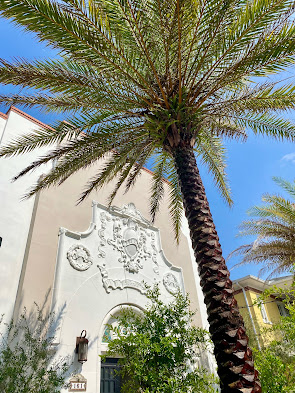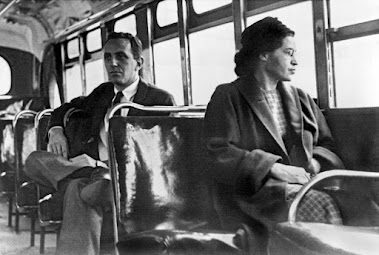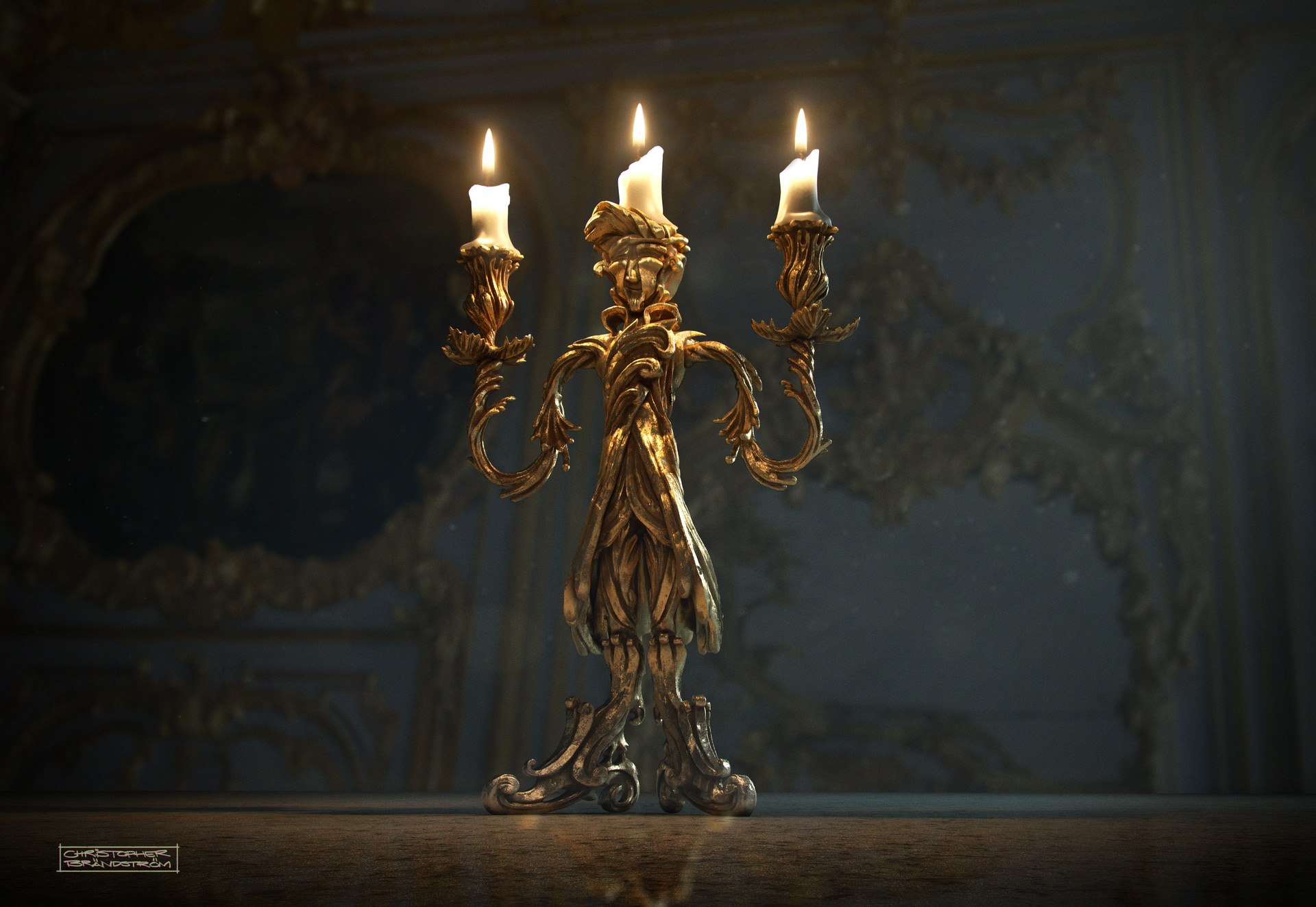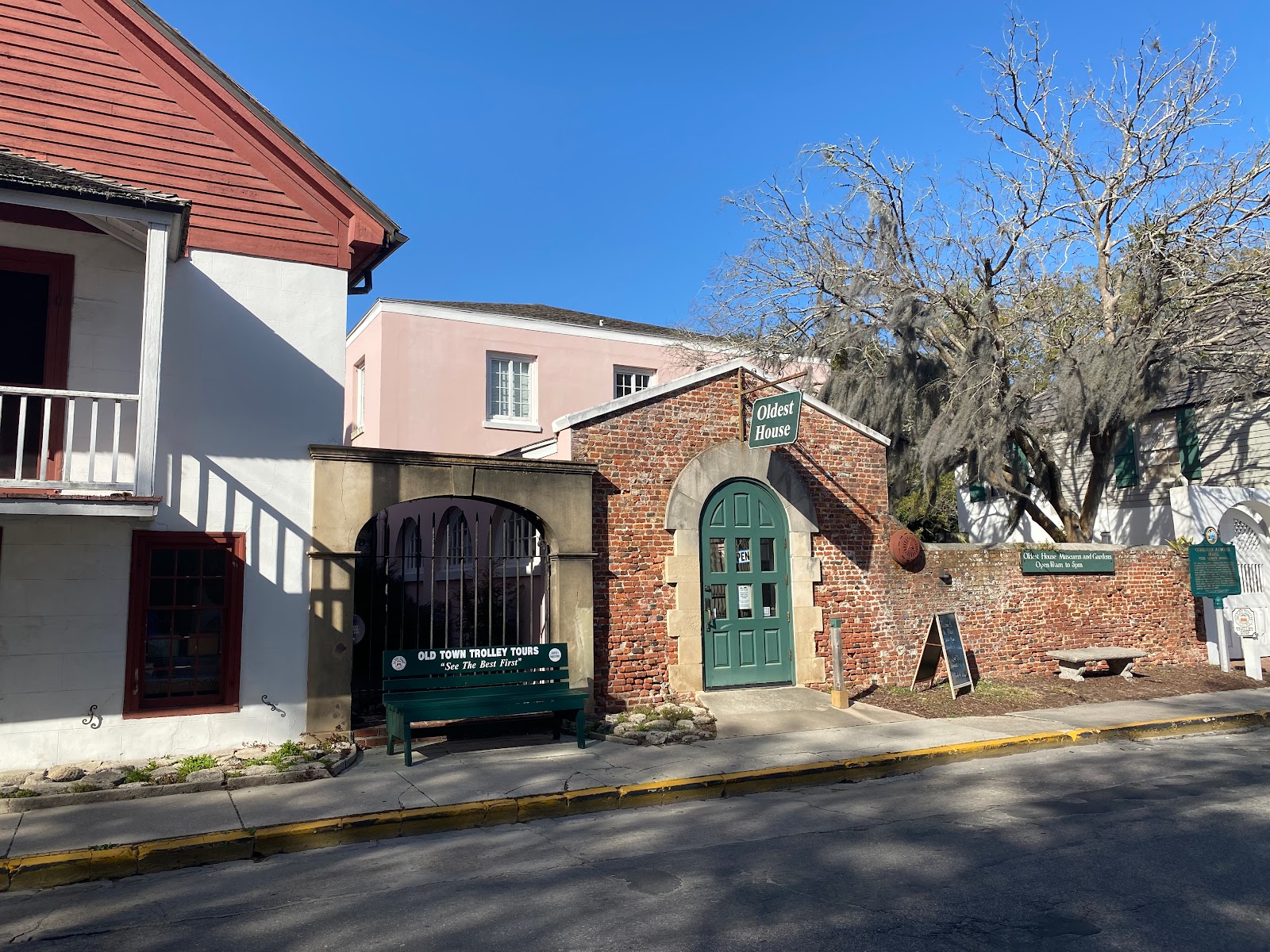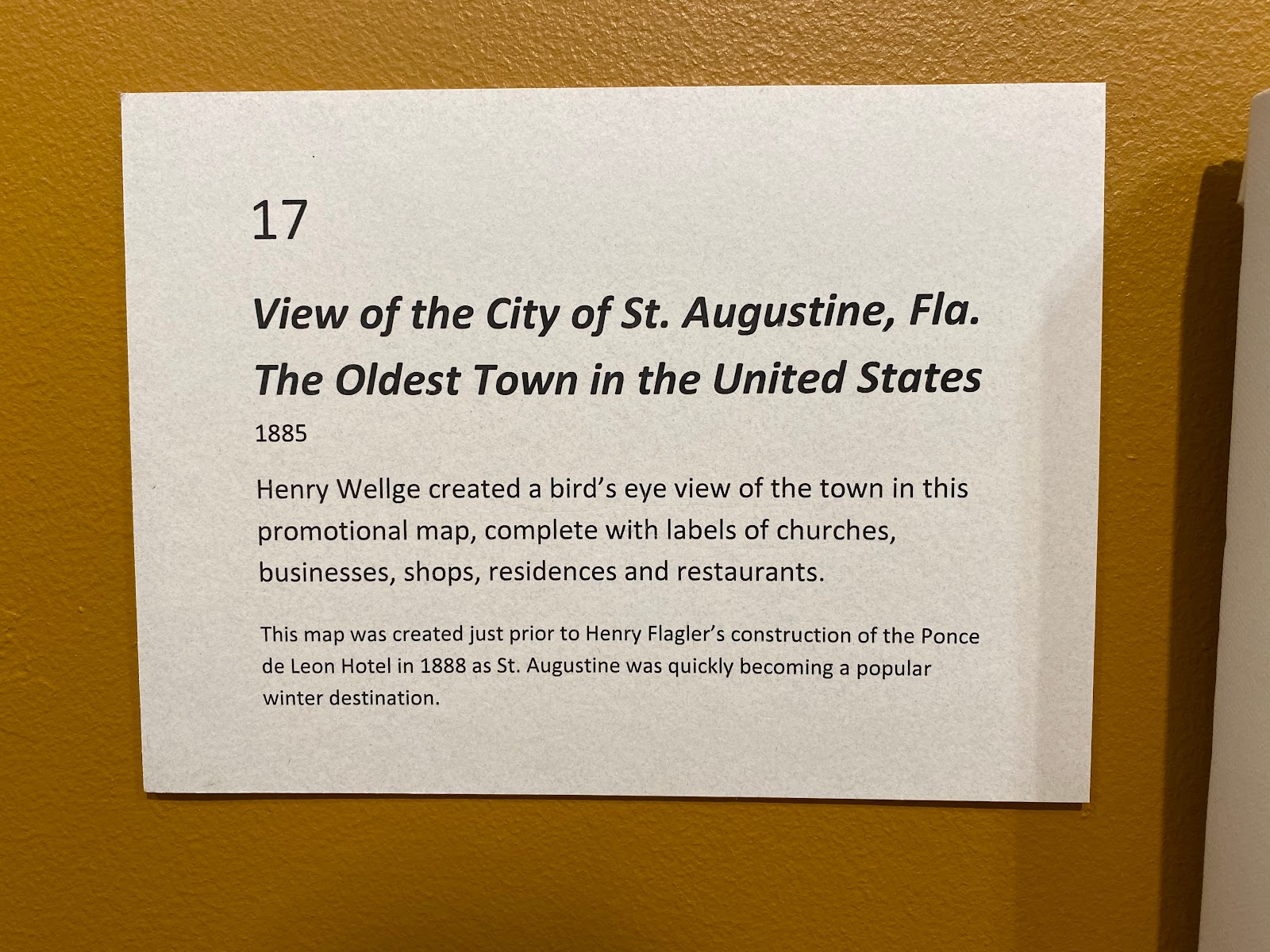St. Augustine, Florida
Thursday, April 7, 2022
The First Congregation Sons of Israel was founded in 1908 after a number of Eastern European Jews had settled in St. Augustine in the late 1800s. Under the leadership of Rabbi Jacob Tarlinsky and his wife, Dora, the Synagogue was dedicated in 1923 with the completion and first service on March 30, 1924. The Synagogue was an orthodox one where women and men were separated during the service, the women and children seated above on the balcony.
Over the years, the Synagogue has changed in a number of ways. During the first half of the 20th century, the pews and hard benches were replaced with previously-used theater seats, a bimah was built, and the Ark was moved into the location. In 1958, the original windows were replaced with stained glass ones taken from a synagogue that was going to be torn down in Atlanta. They were obtained and installed by Rabbi Jacob and Mrs. Dora Tarlinksky's three daughters.
Unfortunately, the building was damaged by both hurricanes Matthew and Irma. The floors were saved, the seats were repaired by a local cushion maker, and the original chandelier and ceiling decoration was lost. Now, on the ceiling is a large Star of David which was designed and created by a Flagler Student. The Synagogue is a beautiful place to visit and attend a service.
https://www.firstcongregationsonsofisrael.com/
Exterior Photo 1
Exterior Photo 2
Artifact Photo 1
The Torah is the first part of the Jewish bible. It is the central and most important document of Judaism and has been used by Jews through the ages. It refers to the five books of Moses which are known as Genesis, Exodus, Leviticus, Numbers, and Deuteronomy. Jews believe that God dictated the Torah to Moses on Mount Sinai 50 days after their exodus from Egyptian slavery. It is believed by them that the Torah shows how God wants Jews to live. As a whole, the Torah contains 613 commandments and Jews refer to the ten best as the 10 statements.
The Torah is written in Hebrew, the oldest of Jewish languages. The scrolls are taken out from the Ark and portions are read in the synagogue. Scrolls are entirely written in Hebrew on a softer parchment from a kosher animal. It can take up to 18 months to complete the whole process. The scrolls shown above came over from Europe.
Artifact Photo 2
The stained glass windows are the most outstanding features of the Synagogue. These Spanish-style white stucco windows were created between 1889 and 1890 for the Ahawas Achim, an Orthodox Synagogue in Atlanta. In the 1950s, the windows were salvaged when the synagogue was torn down for the construction of the interstate. As stated above, the windows were obtained and installed in the sanctuary by Rabbi Jacob and Mrs. Dora Tarlinsky's three daughters, Sarah Bernstein, Florence Feiden, and Lena Lichter. When the windows needed restoration in 2013, Ken Hardenmen, the great-grandson of the original window artist had completed that task.
Image in Conversation #1
https://www.businessyab.com/explore/united_states/new_jersey/bergen_county/woodcliff_lake/overlook_drive/87/temple_emanuel_of_the_pascack_valley_44499
The image above is Temple Emanuel which is located about 12 minutes from my house at home. I have attended multiple Bar/Bat Mitzvah services here for friends. Temple Emanuel of Pascack Valley is a warm and welcoming Conservative Synagogue that has been the center of Jewish life in the Pascack Valley of Bergen County, New Jersey since 1927.
Their services are spiritual and inclusive. The Rabbi there guides the congregation in interpreting the prayers. It is a place where the children learn to appreciate the gift of their Jewish heritage. The Synagogue currently has over 500 family units that live in towns from Mahwah and Upper Saddle River to River Vale and Emerson and everywhere in between.
Image in Conversation #2
https://www.tomschifanella.com/blog/tiffany-glass-at-flagler-college-st-augustine-florida
Pictured above one of the staircases in the former Ponce De Leon Hotel, now currently occupied as Flagler College. The Ponce de Leon Hotel was an exclusive luxury hotel in St. Augustine, Florida, built by millionaire developer and standard oil co-founder Henry Flagler. The hotel's design was of Spanish Renaissance by the New York architecture firm Carrère & Hastings. This hotel was also one of the first buildings in the country wired for electricity since the beginning and installed by Thomas Edison.
In both the dining hall and spread throughout the interior of the building is stained glass. Not any type of stained glass, but Tiffany stained glass. The interior design of the hotel was headed by Louis Comfort Tiffany. His company of Tiffany &. Co provided the stained glass windows in the hotel's dining room. Ponce de Leon has the largest collection of private Tiffany Stained Glass Windows in the world. The building is one of a kind and absolutely gorgeous.
Literature in Conversation
In the novel Parable Of The Sower by Octavia E. Butler, the woman Lauren takes on the role of being a leader in her community. She guides multiple individuals and tries her best to enforce her new religion towards the people in the end. On page 143, an individual says to Lauren, "If you still want to play a man, I'll cut your hair for you", showing that if she wants to continue on and fight, she will have to pretend to be a man (Butler 143). As shown very prominently in the novel, Lauren recognizes that the world is made for men to survive but she as a woman takes the position. The statement of the world is for men correlates to the Synagogue because as explained and even in the title of the establishment that "sons", women were not as prominent of characters.
Creative Component
This is a piece of stained glass I created to show all of the pictures my friends and I took at all of our site visits. The stained glass from the Synagogue stuck with me and inspired me to create my own memorable images. The image I created also displays the preservation of friendship.
